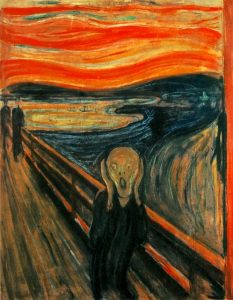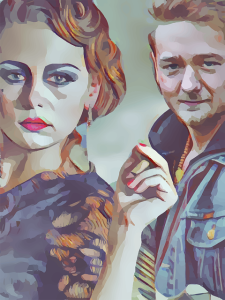Are you a budding thriller writer looking to find the right tone? Crafting words that captivate an audience is no easy task, yet with this guide on various styles in writing, you will learn how to bring life to your stories through your choice of language. Discovering and mastering multiple techniques can differentiate between a good and a great storyteller, so let’s explore the art of tones in writing!
Understand the difference between suspense and tension in thriller writing
Suspense and tension are two distinct elements in thriller writing, and understanding their differences can help you craft a gripping story. Suspense is generated when readers don’t know what will happen next. Tension is created when they see what will occur but cannot prevent it. This tension brings an element of surprise to the story, as readers are constantly anxious.
Identify the role of dialogue, both spoken and unspoken
Dialogue can be a powerful tool for creating an atmosphere
There are two main types of dialogue: spoken and unspoken. Spoken dialogue conveys characters’ thoughts and feelings engagingly, while unspoken dialogue is a plot device to suggest something sinister lurking beneath the surface.
Playing with both kinds of dialogue can create an ominous atmosphere that keeps readers hooked.
What overall style do you want to write in? For example, you may choose an assertive writing tone for your story, an optimistic tone, a sarcastic tone, a regretful tone, or a mixture of tones.
Here are some examples of how spoken dialogues can create an atmosphere
• “My parents have been disappointed with me lately,” Person 1 says in a worried tone. “That sucks; what happened?” Person 2 says in a cooperative tone.
In this example, Person 1 expresses worry through rapid body language and fidgeting while speaking in a pessimistic tone. Meanwhile, Person 2 answers more slowly while showing genuine concern for what happened by asking questions rather than giving advice immediately.
• In William Golding’s classic novel Lord of the Flies, Simon tells Ralph, “Maybe there is a beast… Maybe it’s only us.” This simple exchange in a tense tone evokes fear and uncertainty as it emphasizes both characters’ lack of knowledge about their situation on the island.
• In The Godfather (1972), when Michael Corleone visits his father Vito’s home after returning from war and hears the exclamation “Look who’s here! It’s Mike Corleone!” in a friendly tone, followed by the heartfelt embrace between him and his father – this emotionally charged scene creates a tender family atmosphere full of love and respect.
• “You talkin’ to me?” This infamous line by Robert De Niro as Travis Bickle in Taxi Driver instantly turns the vibe from calm to intense. It is a great example of tension-filled dialogue employed by director Martin Scorsese to generate a tense atmosphere for his characters.
Here are a few examples of unspoken dialogues used to create atmosphere

– A lingering gaze between two people that lasts just long enough to send a shudder down your spine – signifying unspoken tension or romance between them.
– The way someone pauses before speaking – conveying guilt, anxiety, or carefully thought-out words.
– Body language can also be considered unspoken dialogue that signals to those around us. Our posture and movements speak volumes about our inner feelings, even if no words are spoken out loud.
– It has been said that silence speaks louder than words sometimes because, without speech, we rely on subtler forms for communication like emotions or presence alone. This often creates a strong atmosphere – particularly in social situations where tension lingers without exchanging words.
Embrace the power of simplicity
When it comes to writing thriller storylines, less is more. Simple language can convey suspense and tension more effectively than elaborate descriptions, so choosing fewer words that pack a punch can make your stories stand out.
Here are some examples of short, hard-hitting sentences that instantly evoke suspense and tension:
– It was too late now; he had already stepped into the darkness.
– The terrible truth began to dawn on her slowly.
– She could feel something sinister in the air around her.
– His heart raced as the sound of footsteps neared.
– Something wasn’t right – she could sense it in her bones.
– The shadows seemed alive with hidden menace.
– He felt a chill run down his spine when he saw what awaited him.
– A clock ticked ominously in the stillness of night…
These sentences paint vivid and exciting pictures without requiring several paragraphs of description or explanation – making them perfect for adding instant suspense and tension to any story!
Utilize metaphors, similes, and other descriptive languages to set the mood

Descriptive language can help create a mood in your writing. Metaphors provide insight into characters’ emotions by comparing them to something else, while similes directly compare two objects. Other descriptive language, such as personification and alliteration, can evoke an emotion from the reader.
Here are a few examples of descriptive language
Using metaphors: “Life is a rollercoaster ride” or “Her heart was a black cloud full of sorrow.”
Using imagery: “The horizon bled from pink into orange at sunset” or “His bald head glistened under the fluorescent lights.”
Sensory language: “The crash of thunder shook her bones” or “She tasted bitterness on her tongue.”
Play around with pacing and timing
One way to craft various tones in writing is with pacing and timing. Pacing involves the speed at which events occur in your story, while timing refers to when certain key events happen to each other. Adjusting the pacing and timing can create tension and suspense in your stories.
Use sensory details to bring the characters and their environment to life

Paying attention to the small details of an environment, such as its smell or texture, is key to creating an immersive experience for your audience. Additionally, you can use these details to foreshadow upcoming events or emphasize a character’s feelings or overall mood.
Employ surprise elements to hook your reader
Surprise elements can create unexpected twists in your story, keeping readers hooked and turning the pages. Surprise elements come in many forms, such as unexpected plot turns, sudden revelations of secrets, or shocking revelations about a character’s motivations. When these elements are used strategically, they can dramatically affect the story’s momentum and build suspense.
Employ audio/visual elements to add tension
Music or sound effects can draw attention to key moments in the story and evoke an emotional response from readers.
For example, sound effects like thunderclaps set the stage for storms during movies or slow drum beats playing during sad scenes. These soundtracks evoke certain feelings that help build upon existing atmospheres, even though they may seem insignificant.
Know when to use humor
Humor is an underrated tool for creating various tones in writing, especially for thrillers. Knowing how to incorporate dark humor into your narrative effectively can be a great way to keep readers engaged and add lighthearted moments between intense scenes. Humor can also be used to build up suspense and surprise, making for an even more thrilling story.
Humor is an excellent tool for creating different tones, but it should never detract from the story’s tension or suspense. Used sparingly and with good judgment, humor can be a powerful tool to add dimension to your story.
Take risks and break the rules
The key to writing a great thriller is to take risks and break the rules. The best thrillers are the ones that surprise and shock readers, so don’t be afraid to think outside the box and explore untapped ideas, as this can lead to surprises that will make your story stand out from other thrillers. Be willing to flex the boundaries of genre conventions and challenge your readers with plot twists and surprises.
Employ foreshadowing without giving away too much of what happens later
Foreshadowing can add an element of suspense to your writing without giving away too much. By hinting at what will come later, you can create intrigue and anticipation among readers without ruining the surprise. However, it is important to be careful not to give away too much information, or the outcome may become predictable.
Conclusion
The overall tone in writing, the key to creating an effective thriller, is to fully grasp the differences between suspense and tension and use them to their full effect.
As you’ve no doubt gleaned from this post, successful authors don’t just “tell” or “show” but rather give their stories shape by letting the two interplay with one another. By mastering both elements of writing and playing on each other’s strengths, you, too, can create a thrilling tale that lingers long in readers’ minds. Good luck with your story!
Thank you for taking the time to read. May you find success and joy in all that you create.
If you’re working on your first novel and are looking for more help with your writing, please check out my other articles at https://ullahakanson.com/blog/
Best of luck with your writing!
Ulla
www.ullahakanson.com

